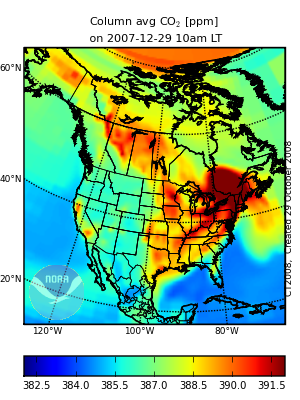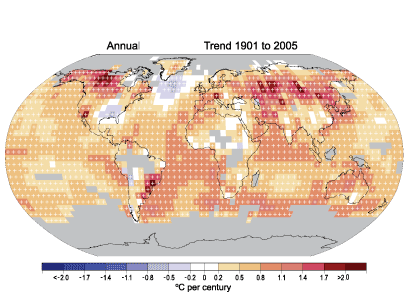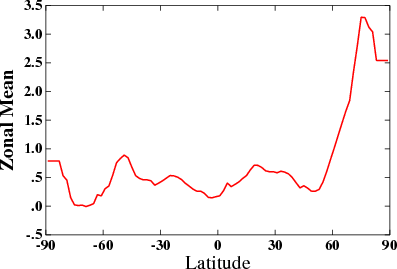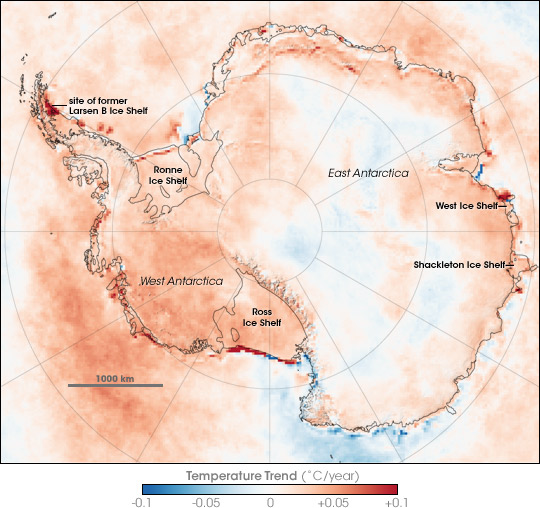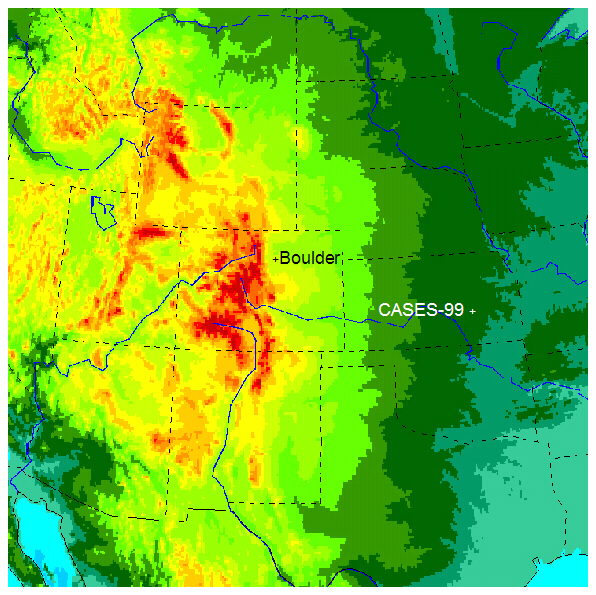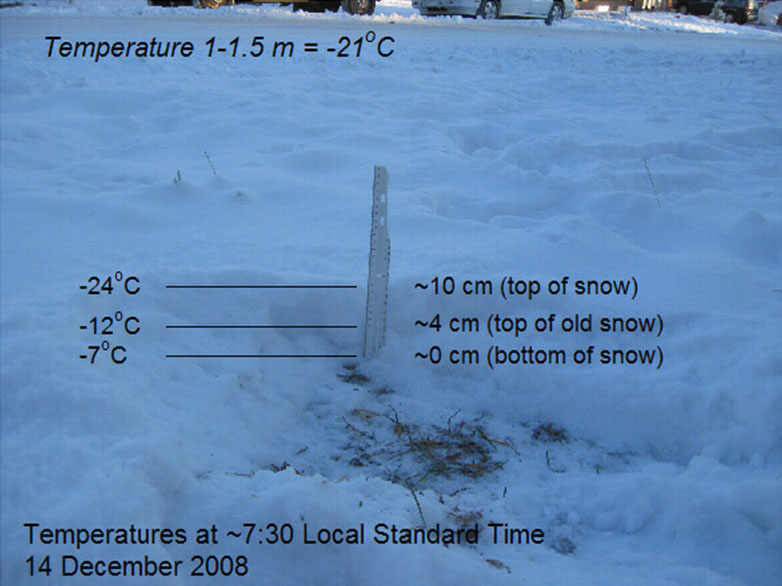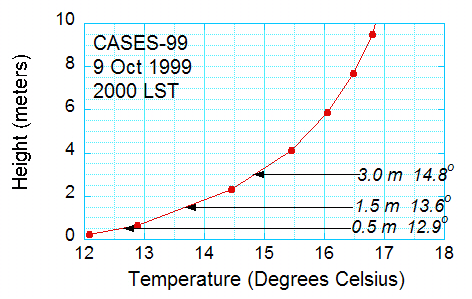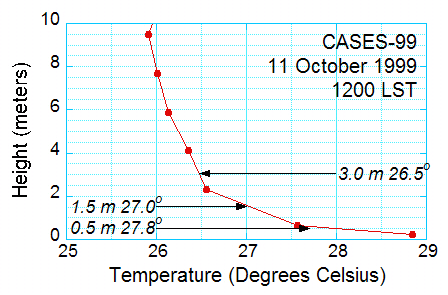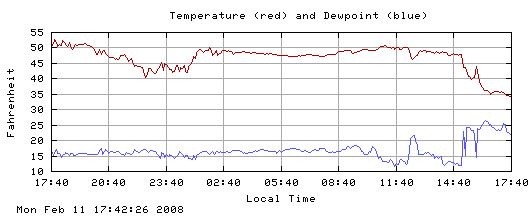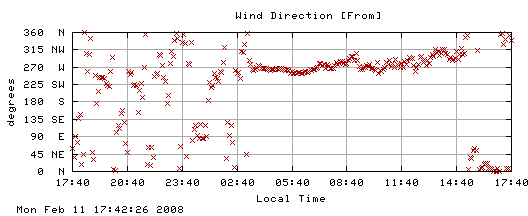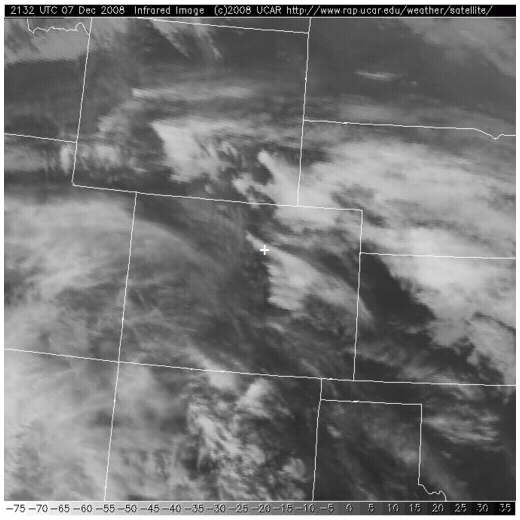Below is a summary of the results of Dr. Kevin Czajkowski’s surface-temperature field campaign conducted during December, 2008. The recently-posted blog “More Misconceptions about Climate Change, Part 2,” is just below this one. — PL
I wanted to write a wrap-up for the surface temperature field campaign. Dr. LeMone posted a great discussion of the relationship between surface temperature and air temperature (scroll down to 6 January blog). I felt cold just reading about temperatures of –27 C.
Many of the observations from the field campaign have been posted but not all have yet. If you still need to get your data online, please do so soon, as students from around the world will be working on their inquiry-based research projects. They may want to use your data. Also, several schools were not able to participate in December so they took observations in January and some schools are still taking observations now.
Thus far, 58 schools have entered data for the field campaign and there have been a total of 1584 observations. If you add up all of the surface temperature, snow, clouds and contrail observations, there have been 36,432 observations taken during the field campaign. Could you image trying to take all of those observations by yourself? I couldn’t.
I am really impressed with some of the schools that had many observations submitted. The school with the most observations was John Marshall High School in Glendale, West Virginia, USA with 122. Other notable schools are: Peebles High School, Peebles, Ohio, USA (94), Dalton High School, Dalton, Ohio, USA (77), and Oak Glen High School, New Cumberland, West Virginia, USA (81), elementary schools Main Street School, Norwalk, Ohio, USA (90) and St. Joseph School, Sylvania, Ohio, USA (84). In addition, a couple of schools in Poland took a large number of observations, Gimnazium No 1, Sochaczew, Poland (72) and Gimnazjum No 7 Jana III Sobieskiego, Rzeszow, Poland (62).
This year the weather cooperated pretty well and many of you were able to observe the surface temperature with snow on the ground. The deepest snow depth (288 mm) was measured by students at Nordonia Middle School, Northfield, Ohio, USA. Fifteen of the lowest 20 surface temperatures recorded were observed by students from Moosewood Farm Home School, Fairbanks, Alaska, USA. The lowest surface temperature that they recorded was –32 degrees Celsius. Another cold surface temperature (-26 degrees Celsius) was noted by Gimnazium No 1, Sochaczew, Poland. All of the warmest surface temperatures were recorded by students at Brazil High, Brazil Village, in Trinidad and Tobago with temperatures of +35-50 degrees C.
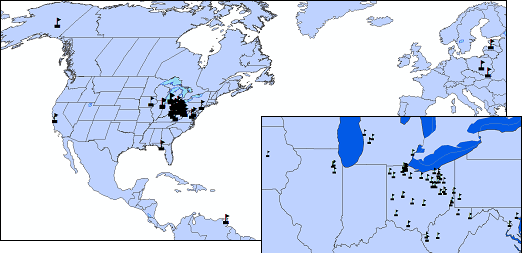
Figure 1: Schools in GLOBE that participated in the surface temperature field campaign. Many are in Ohio because that is where I have funding for professional development.
Figures 2 and 3 show the relationship between surface temperature and snow in an area mainly covering Ohio, Michigan and West Virginia. These observations were not separated on the basis of water in the water.
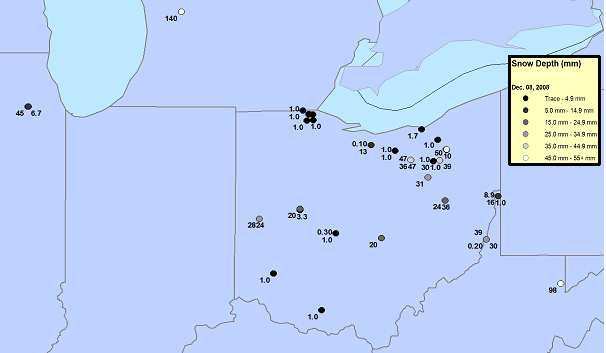
Figure 2. Student observations of snow depth, 8 December, 2009.
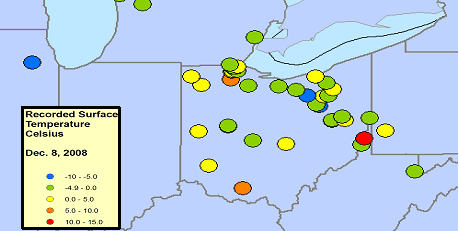
Figure 3: Surface temperature as recorded by students on 8 December, 2008.
There is one thing to notice about the satellite imagery during this time period. Clouds obscured the ground most of the time. The image below, 7 December 2008, was the clearest image we could obtain of the Great Lakes regions. It seems that the observations in eastern Europe were cloud covered even more. The MODIS image depicts the surface temperature as the satellite went over and took observations on , 7 December 2008. The orange depicts part of Lake Huron that was ice covered.
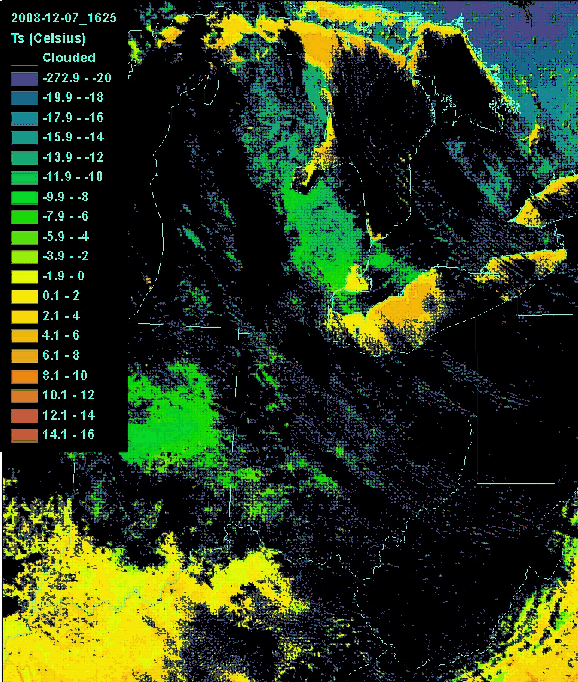
Figure 4. MODIS Surface temperature product (MOD11), 7 December, 2008.
Here is the list of all of the schools that participated.
Roswell Kent Middle School, Akron, OH, US [37 rows]
OHDELA, AKRON, OH, US
Capital High School, Charleston, WV, US [6 rows]
Dalton High School, Dalton, OH, US [77 rows]
Chartiers-Houston Jr./Sr. High School, Houston, PA, US [28 rows]
Lakewood Middle School, Hebron, OH, US [10 rows]
Cloverleaf High School, Lodi, OH, US [60 rows]
The Morton Arboretum Youth Education Dept., Lisle, IL, US [9 rows]
Peebles High School, Peebles, OH, US [94 rows]
North Marion High School, Farmington, WV, US
Christensen Middle School, Livermore, CA, US [2 rows]
Gimnazjum No 7 Jana III Sobieskiego, Rzeszow, PL [62 rows]
Gateway Middle School, Maumee, OH, US [9 rows]
Penta Career Center, Perrysburg, OH, US [8 rows]
Canaan Middle School, Plain City, OH, US [28 rows]
Mill Creek Middle School, Comstock Park, MI, US [24 rows]
Brazil High, Brazil Village, TT [30 rows]
Kilingi-Nomme Gymnasium, Parnumaa, EE [42 rows]
Montague Elementary School, Montague, NJ, US [2 rows]
Swift Creek Middle School, Tallahassee, FL, US [19 rows]
National Presbyterian School, Washington, DC, US [15 rows]
The Bryan Center, Bryan, OH, US [16 rows]
Baltimore Polytechnic Institute, Baltimore, MD, US [2 rows]
Reams Home School, Wellington, OH, US [36 rows]
Maumee High School, Maumee, OH, US [16 rows]
Whittier Elementary School, Toledo, OH, US [6 rows]
Huntington High School, Huntington, WV, US [29 rows]
St. Joseph School, Sylvania, OH, US [84 rows]
Russia Local School, Russia, OH, US [24 rows]
Warrensville Heights High School, Warrensville Heights, OH, US [2 rows]
WayPoint Academy, Muskegon, MI, US
Gimnazium No 1, Sochaczew, PL [72 rows]
Moosewood Farm Home School, Fairbanks, AK, US [27 rows]
St. Michael Parish School, Wheeling, WV, US [14 rows]
Anthony Wayne High School, Whitehouse, OH, US [13 rows]
Bellefontaine High School, Bellefontaine, OH, US [36 rows]
Oak Glen High School, New Cumberland, WV, US [81 rows]
Barberton High School, Barberton, OH, US [37 rows]
Nordonia Middle School, Northfield, OH, US [34 rows]
Aurora Elementary School, Aurora, WV, US [13 rows]
Orrville High School, Orrville, OH, US [15 rows]
Bowling Green Christian Academy, Bowling Green, OH, US [26 rows]
Polly Fox Academy, Toledo, OH, US [18 rows]
McTigue Middle School, Toledo, OH, US [9 rows]
Highlands Elementary School, Naperville, IL, US [8 rows]
South Suburban Montessori School, Brecksville, OH, US [34 rows]
NASA IV&V Educator Resource Center, Fairmont, WV, US
John Marshall High School, Glendale, WV, US [122 rows]
Boys’ Village School, Wooster, OH, US [9 rows]
Birchwood School, Cleveland, OH, US [43 rows]
Lebanon High School, Lebanon, OH, US [9 rows]
Central Catholic High School, Toledo, OH, US [4 rows]
Eastwood Middle School, Pemberville, OH, US [18 rows]
Orange Elementary School, Waterloo, IA, US
Hudsonville High School, Hudsonville, MI, US [27 rows]
The University of Toledo, Toledo, OH, US [32 rows]
O. W. Holmes Elementary School, Detroit, MI, US [11 rows]
Main Street School, Norwalk, OH, US [90 rows]
That is all from this year’s surface temperature field campaign. Maps were prepared by Nancy Cochran and Timothy Ault of the University of Toledo.
Dr. C.
Thank you, Dr. C., and all the students and teachers who participated in this field campaign! – PL

